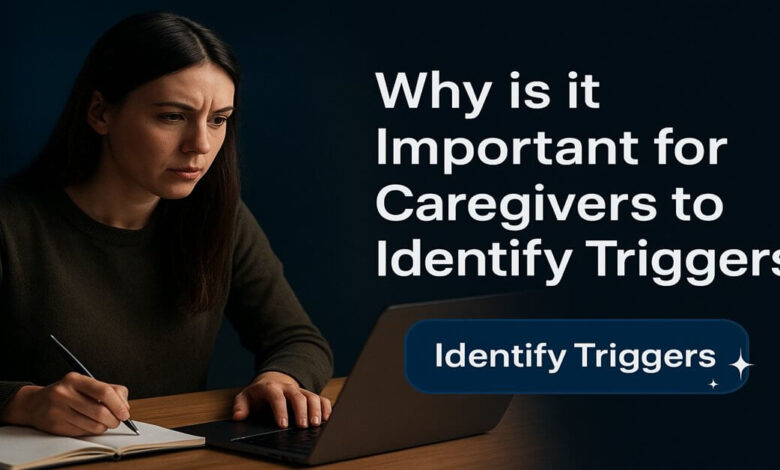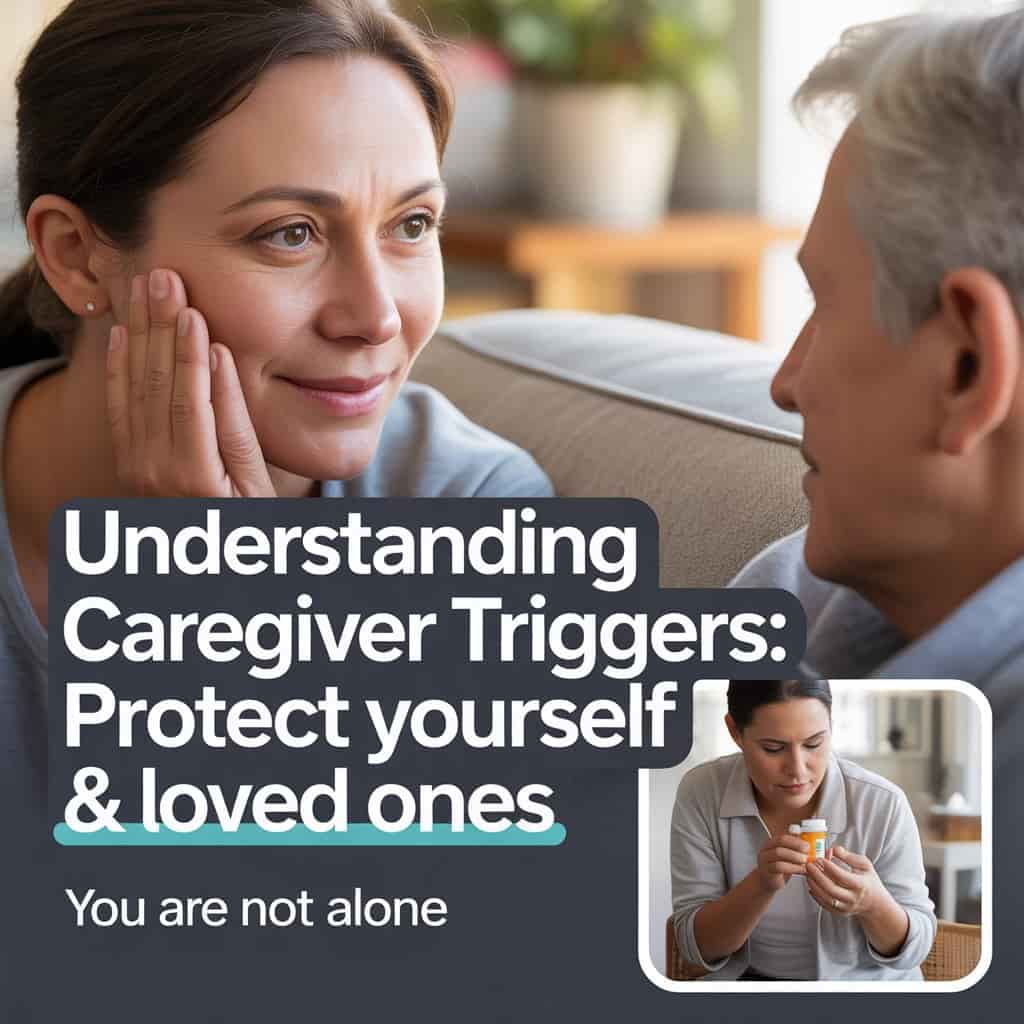
Why is it Important for Caregivers to Identify Triggers
Emotional triggers are powerful responses that can influence your thoughts, feelings, and actions often without warning. Learning to recognize and manage them is key to emotional well-being and personal growth.
This guide explores the science behind emotional triggers, common examples, and practical strategies for mastering your reactions.
Science Behind Emotional Triggers:
How Your Brain Responds:
Your brain’s amygdala acts like an internal alarm system. When it detects something potentially threatening—like criticism, conflict, or a loud noise—it signals the hypothalamus, triggering a fight-or-flight response. This instinctive reaction readies your body to confront or flee from danger, even if the “threat” is not immediately harmful.
Hormones and Emotions:
Hormones also influence emotional triggers:
- Cortisol (stress hormone) heightens anxiety in tense situations.
- Dopamine and oxytocin promote happiness and social bonding.
The balance of these hormones affects how intensely we react to certain situations.
Genetics and Life Experiences:
Your responses aren’t just biological they’re shaped by genetics and past experiences. The Psychological Construction Theory (Barrett, 2017) suggests emotions emerge from your brain interpreting bodily sensations in context. In other words, your unique history shapes how you feel and react.
Check Also: Caregiver for Elderly Chevy Chase
Why Triggers Happen?
Most triggers are linked to past experiences, including unresolved trauma, childhood experiences, or significant life changes. For example, a person who experienced public embarrassment may feel extreme anxiety during presentations years later.
How to Identify Your Triggers?
Try this simple 3-step process:
- Notice Physical and Emotional Responses
Watch for increased heart rate, tension, or unease. - Trace Back the Situation
Reflect on what led to your feelings. Ask, “Why am I reacting this way?” - Repeat and Reflect
Regularly journaling your responses reveals patterns over time.
Common Emotional Triggers:
| Trigger | Example Reaction | Why It Happens |
|---|---|---|
| Feeling Invisible | Anxiety in social settings | Past experiences of neglect or being ignored |
| Being Dismissed | Frustration or anger | Fear of not being valued |
| Ghosting | Confusion or self-doubt | Past relationship insecurities |
| Manipulation | Anger or betrayal | Learned mistrust or vulnerability |
| Loss of Control | Anxiety in conflicts | Sensitivity to personal boundaries |
| Environmental Stimuli | Panic or unease | Associations with past trauma |
| Conflict & Rejection | Emotional distress | Repetition of past interpersonal wounds |
Impact on Mental Health: Triggers can exacerbate anxiety, PTSD, or depression. Recognizing them early helps prevent overwhelming responses like panic, avoidance, or flashbacks.

Identifying Your Personal Emotional Triggers:
Practical Techniques:
- Trigger Journal: Note situations, your feelings, and reactions. Look for patterns.
- Body Awareness: Notice tension, racing heartbeat, or shallow breathing—these often signal a trigger.
- Reflection: Connect current reactions to past experiences.
- Talk About It: Share your triggers with a trusted friend or therapist to gain new perspectives.
Mastering Reactions to Emotional Triggers:
Step-by-Step Strategies:
- Identify Triggers – Keep a journal and reflect regularly.
- Practice Mindfulness – Try deep breathing, meditation, or grounding exercises.
- Acknowledge Emotions – Accept feelings without judgment; don’t suppress them.
- Redirect Thoughts – Shift focus to a positive or engaging activity.
- Seek Support – Professional guidance can provide coping strategies tailored to you.
The Power of Support Systems:
Friends, family, and therapists can offer empathy and perspective, helping you navigate triggers with greater ease.
Building Resilience Against Emotional Triggers:
Coping Mechanisms:
- Personalized Plans: Create strategies for known triggers.
- Cognitive Restructuring: Reframe negative thoughts associated with triggers.
- Mindfulness Practice: Regular meditation or breathing exercises improve emotional regulation.
- Therapy: CBT or exposure therapy helps manage trauma-related triggers effectively.
Emotional Intelligence and Personal Growth:
Recognizing your triggers strengthens emotional intelligence:
- Self-Awareness: Understand your reactions and patterns.
- Interpersonal Skills: Empathize with others and improve communication.
- Personal Growth: Reflective practices like journaling enhance resilience.
By connecting triggers to emotional intelligence, you gain control over your reactions, leading to healthier relationships and better emotional well-being.
Managing Challenging Behavior:
Managing challenging behavior is a key skill for caregivers. Patients may exhibit agitation, resistance, or aggression due to illness, pain, or confusion. Understanding the root cause—whether it’s physical discomfort or emotional distress—can help you respond effectively and reduce tension.
Caregiver Mental Health:
Your mental wellbeing is just as important as your caregiving duties. Caregiver mental health involves recognizing burnout, fatigue, and emotional strain early. Regular breaks, self-care routines, and support groups can prevent stress from escalating.
Triggers for Patient Agitation:
Triggers for patient agitation often include environmental factors, unmet needs, or overstimulation. Minimizing noise, maintaining routines, and clear communication can help reduce these triggers and create a calmer caregiving environment.
Emotional Awareness in Caregiving:
Developing emotional awareness in caregiving helps you manage your responses and empathize with the person you care for. Mindfulness practices, deep breathing, and reflective journaling are effective ways to build emotional resilience.
Handling Difficult Caregiving Situations:
Handling difficult caregiving situations requires patience, adaptability, and problem-solving. Staying composed, seeking advice from professionals, and using evidence-based strategies can make challenging moments more manageable.
Tips for Caregivers to Manage Stress:
Here are practical tips for caregivers to manage stress:
- Take short, regular breaks and prioritize rest.
- Maintain a healthy diet and stay hydrated.
- Exercise or engage in light physical activity to release tension.
- Seek social support through friends, family, or caregiver groups.
- Use relaxation techniques like meditation, breathing exercises, or yoga.
By practicing self-awareness, managing triggers, and prioritizing your mental health, caregivers can provide compassionate care while maintaining their own wellbeing.
Conclusion:
Emotional triggers shape our thoughts, feelings, and behaviors, often rooted in past experiences or stress responses. By recognizing and understanding them through mindfulness, reflection, and support, we gain control over our reactions. Mastering triggers strengthens emotional intelligence, resilience, and personal growth.
Frequently Asked Questions:
What are emotional triggers?
Emotional triggers are stimuli like situations, memories, or interactions—that provoke strong emotional reactions, often rooted in past experiences or trauma.
How can I identify my emotional triggers?
Keep a trigger journal, observe physical reactions, reflect on past experiences, and discuss feelings with trusted friends or therapists.
Why do emotional triggers affect people differently?
Individual differences in genetics, past experiences, and hormonal responses shape how each person reacts to triggers.




